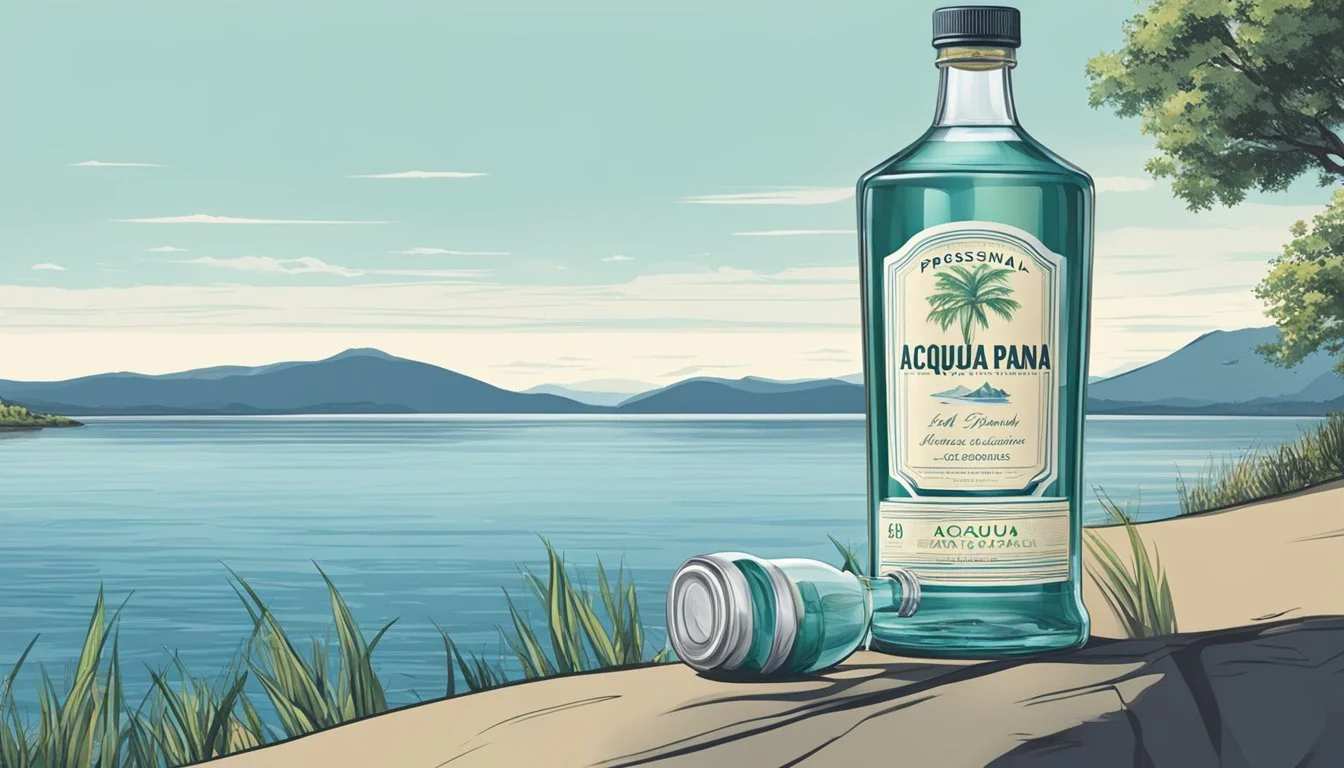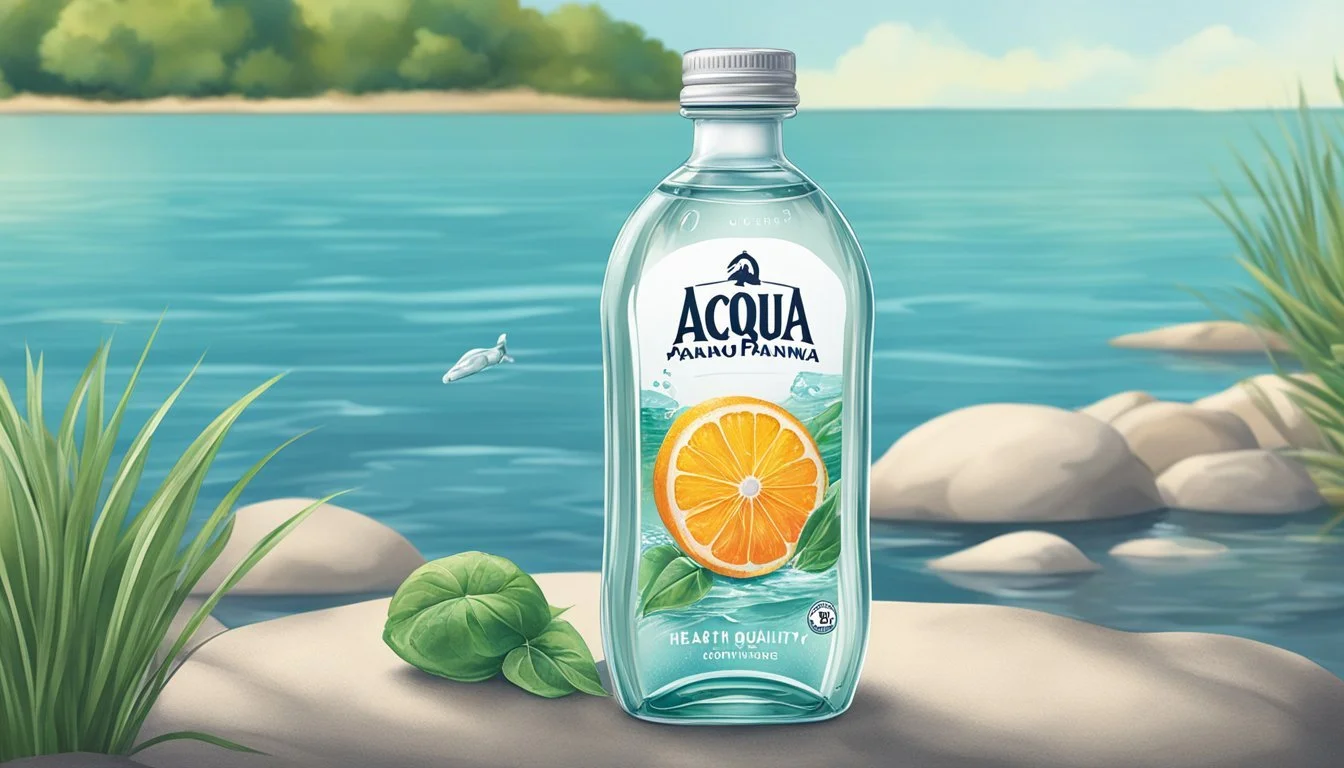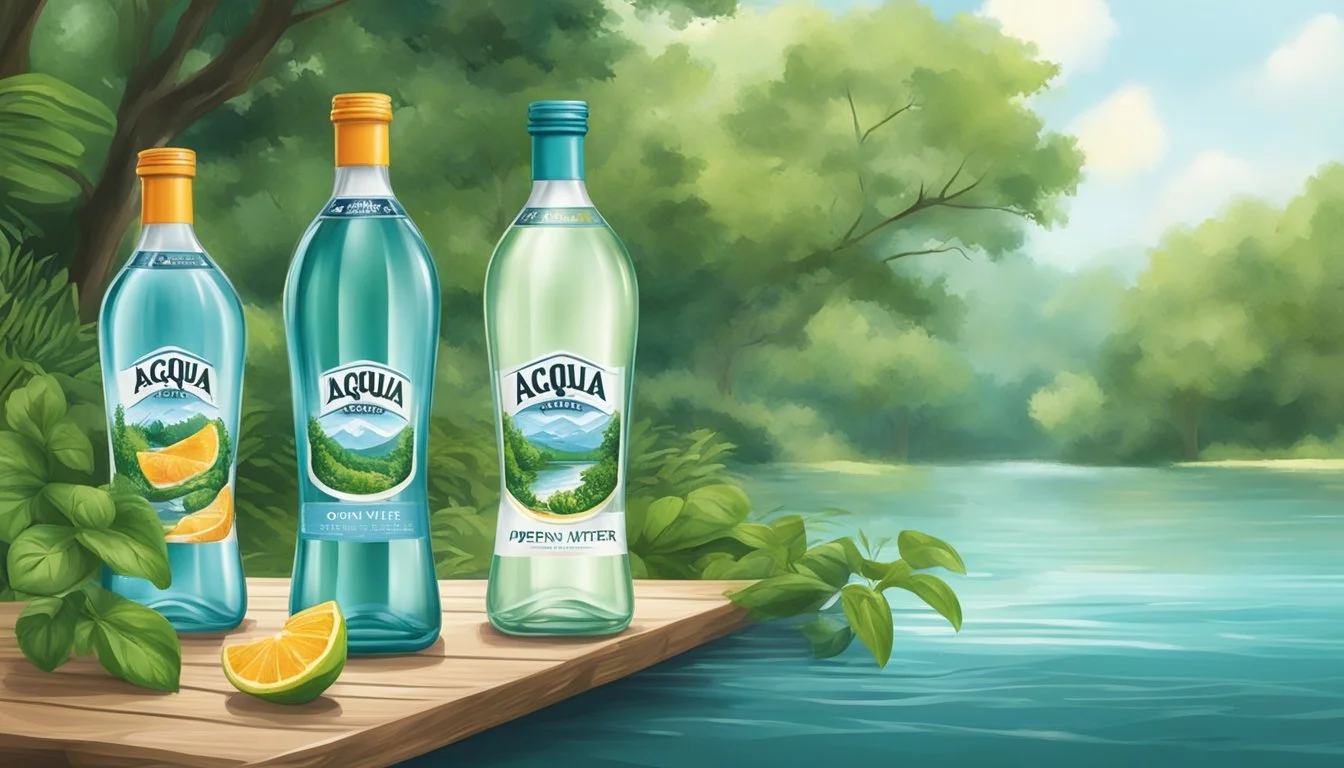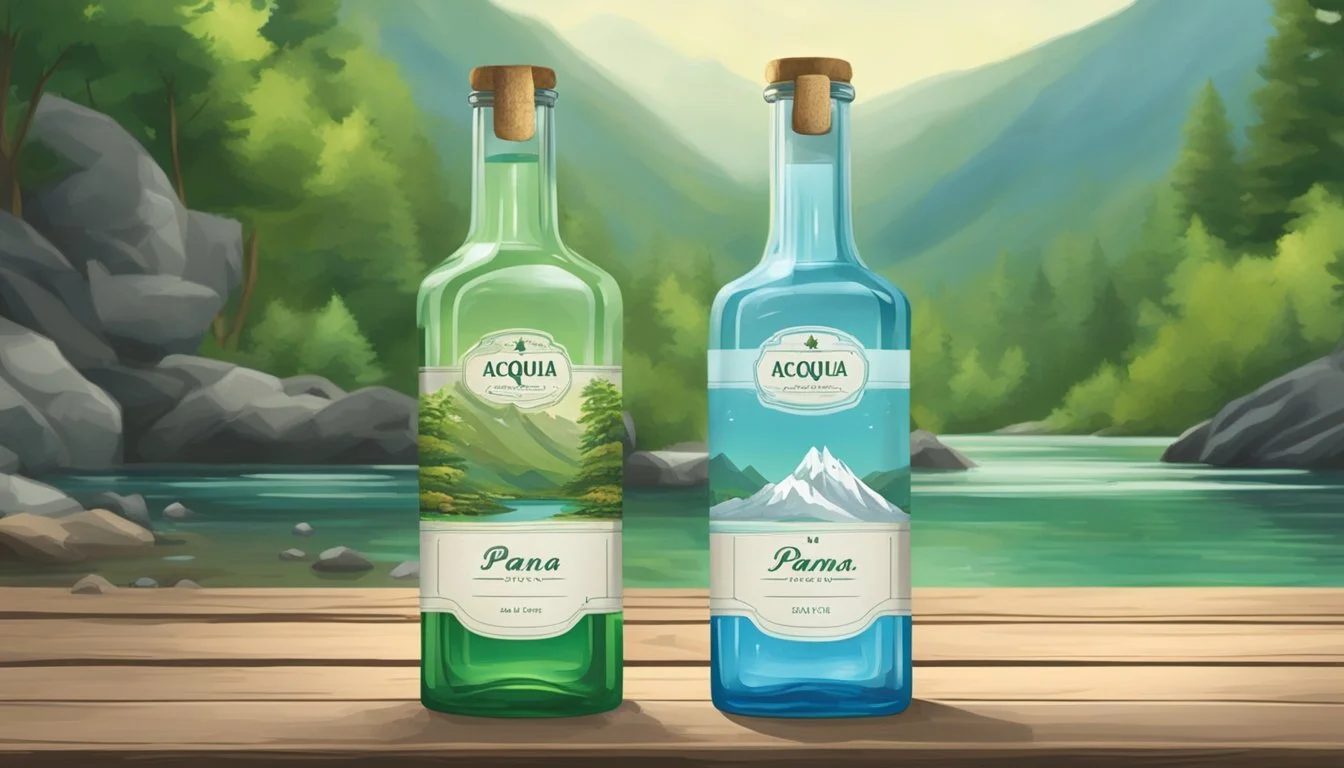Acqua Panna vs. Open Water
Comparing Quality and Taste
Bottled water continues to be a popular choice for hydration among consumers. Acqua Panna, sourced from the hills of Tuscany, Italy, is renowned for its smooth taste and neutral pH balance around 8.0. This makes it a preferred option for those who enjoy a softer, balanced water.
Open Water, on the other hand, markets itself as a sustainable option by packaging its water in recyclable aluminum bottles. Sourced from natural springs, it aims to provide a refreshing taste while minimizing environmental impact.
For those prioritizing taste and pH balance, Acqua Panna may be the better choice, while eco-conscious consumers might lean towards Open Water for its sustainable packaging. This analysis sets the tone for a deeper comparison, inviting readers to explore further details in the following sections.
History and Origin
Acqua Panna and Open Water have distinct historical backgrounds and environmental philosophies, playing pivotal roles in their identities and market positions.
Origin of Acqua Panna
Acqua Panna is sourced from a natural spring located in Tuscany, Italy. The brand derives its name from Villa Panna, an estate once owned by the powerful Medici family. This water has been bottled since 1880, with its origins dating back even further, showcasing a rich historical legacy.
The Tuscan hills provide a pristine environment that contributes to Acqua Panna's reputation for purity. The water is naturally filtered through limestone, which enriches it with minerals. The brand prides itself on maintaining this natural filtration process, ensuring the water delivered to consumers remains rich in quality and taste.
Open Water's Environmental Emergence
Open Water emerged as a response to increasing environmental concerns about plastic waste. Unlike traditional bottled waters, Open Water uses aluminum cans and bottles, which are more easily recyclable compared to plastic. This innovative approach aims to reduce environmental impact significantly.
Founded in the 21st century, Open Water targets eco-conscious consumers. The brand emphasizes sustainability, carbon neutrality, and the reduction of single-use plastic pollution. Their business model and packaging choices reflect a commitment to environmental stewardship, setting them apart from more traditional water brands. Open Water's focus on sustainable practices highlights a proactive approach to addressing environmental challenges.
Source and Natural Composition
Both Acqua Panna and Open Water draw their products from pristine sources, contributing to their unique natural composition and mineral content.
Acqua Panna's Tuscan Source
Acqua Panna sources its water from a natural spring in Tuscany, Italy. The water travels through the Apennine Mountains, acquiring various minerals that contribute to its unique taste and composition. This natural filtration process results in water that has a balanced pH, typically around 8.0.
The Tuscan terroir, rich in natural beauty and geologic significance, plays a significant role in the quality of Acqua Panna. The water is bottled at the source, ensuring that its mineral content and natural properties are preserved.
Open Water's Sourcing Principles
Open Water emphasizes sustainability in its sourcing methods. It sources its water from a deep aquifer, ensuring a consistent and pure supply. The aquifer provides naturally filtered water, with a balanced mineral content ideal for those seeking a refreshing, yet environmentally conscious option.
The company is also committed to eco-friendly practices, employing recyclable aluminum bottles. This approach aligns with their mission to reduce plastic waste and protect natural water sources. Open Water’s dedication to sustainable sourcing ensures a product that is both pure and responsible.
Health and Quality Standards
Evaluating Acqua Panna and Open Water involves comparing their health benefits, mineral content, safety, and taste. Key factors such as essential minerals, electrolytes, pH levels, and overall water safety standards are examined.
Mineral Benefits and Electrolytes
Acqua Panna is rich in minerals, notably calcium and magnesium, which are important for bone health and metabolic functions. This bottled water also contains sodium and potassium, crucial for maintaining electrolyte balance.
Open Water, known for its eco-friendly packaging, also provides essential minerals. While less pronounced than Acqua Panna, it ensures a balanced intake of necessary minerals like potassium and calcium, albeit in lower concentrations.
Both brands offer water that can contribute to daily mineral and electrolyte intake, supporting overall hydration and health.
Water Quality and Safety
Acqua Panna adheres to strict quality standards from its source in Tuscany, ensuring purity and the absence of harmful contaminants. It undergoes regular testing for lead and other heavy metals, ensuring its safety for consumers.
Open Water also meets rigorous quality standards, with water sourced responsibly and tested thoroughly to avoid contaminants like lead. The brand prioritizes sustainability without compromising on water safety.
Both waters are subject to stringent regulations and testing, ensuring they meet high safety standards.
Taste and pH Levels
Acqua Panna has a smooth, velvety texture with a subtly sweet taste due to its balanced mineral composition. It maintains a neutral pH balance around 8.0, which can be beneficial for those seeking to manage dietary pH levels.
Open Water has a crisp, clean taste with a pH level close to 7.0, considered ideal for drinking water. Its taste profile is less mineral-rich, giving it a lighter, more refreshing flavor.
The pH levels and mineral composition significantly influence the taste and drinking experience of each water, catering to different preferences.
Packaging and Environmental Sustainability
Acqua Panna and Open Water employ different packaging materials, each with unique environmental impacts and benefits. Their environmental initiatives also shape how they contribute to sustainability efforts.
Bottle Material and Design
Acqua Panna uses glass bottles and plastic bottles. Glass is often praised for its recyclability and taste-preservation properties. However, the weight and fragility of glass mean higher transportation emissions.
Plastic bottles are lightweight and durable but have a significant environmental impact due to low recycling rates and substantial non-biodegradability.
Open Water opts for aluminum cans which are highly recyclable and offer a more sustainable alternative. Unlike plastic, aluminum can be recycled indefinitely. The cans are also lightweight, reducing carbon emissions during transport.
Table of Packaging Materials:
Brand Materials Used Key Points Acqua Panna Glass, Plastic Recyclable, more emissions (glass), non-biodegradable (plastic) Open Water Aluminum High recyclability, lightweight
Environmental Initiatives
Acqua Panna focuses on initiatives to reduce their carbon footprint. They participate in carbon offset programs and strive for greater energy efficiency in production facilities. Steps are also being taken to improve the recyclability of their packaging, particularly their plastic bottles.
Open Water emphasizes a closed-loop recycling system for their aluminum cans. They also support ocean clean-up efforts and engage in renewable energy projects to lessen their overall impact. Open Water is committed to making their entire operation carbon neutral.
List of Initiatives:
Acqua Panna:
Carbon offset programs
Energy-efficient production
Improved recyclability
Open Water:
Closed-loop recycling
Ocean clean-up
Renewable energy projects
Carbon neutrality
Carbon Footprint Consideration
Both brands consider the carbon footprint of their packaging materials and production processes.
Acqua Panna's reliance on glass and plastic results in higher transportation emissions due to the weight of glass and the lower recyclability of plastic. Their participation in offset programs helps to mitigate these effects.
Open Water's use of aluminum cans typically results in a lower carbon footprint due to the high recyclability and lighter weight of aluminum. The brand’s commitment to carbon-neutral operations further minimizes its environmental impact.
Bulleted Comparison of Carbon Footprints:
Acqua Panna:
Higher emissions from glass transport
Lower recyclability of plastic
Participation in offset programs
Open Water:
Lower emissions from aluminum transport
High recyclability of aluminum
Carbon-neutral commitment
Product Variety and Options
Acqua Panna and Open Water offer various product choices to cater to different preferences. They provide options in terms of still versus sparkling water along with diverse bottling sizes and types.
Still vs. Sparkling Variants
Acqua Panna primarily focuses on premium still water sourced from Tuscany, Italy. Renowned for its smooth, crisp taste, it appeals to those seeking high-quality hydration. Acqua Panna does not offer sparkling water, concentrating its efforts on perfecting still water.
Open Water, in contrast, provides both still and sparkling variants. Their still water emphasizes purity, being sourced from domestic springs and packaged for maximum sustainability. The sparkling option adds a touch of effervescence, appealing to those who enjoy a more vibrant drinking experience. This diversity allows Open Water to reach a broader audience with varied preferences.
Bottling Sizes and Types
Acqua Panna bottles its still water in several formats. Options include 250 ml, 500 ml, 750 ml, and 1-liter bottles. Both glass and BPA-free plastic options are available, catering to different needs and environmental considerations. The glass bottles, in particular, offer a more premium feel and are fully recyclable.
Open Water stands out with its eco-friendly packaging. They utilize recyclable, BPA-free aluminum bottles to minimize plastic waste. Bottling sizes range from 350 ml to 500 ml and 750 ml. Their commitment to sustainability extends to boxed water, providing options that reduce the environmental footprint. This variety in bottle types and sizes demonstrates Open Water’s dedication to offering practical and sustainable choices.
Industry and Market Perception
Both Acqua Panna and Open Water have established significant market presence and consumer trust in the bottled water industry. Each brand distinguishes itself by its commitment to quality and sustainability.
Brand Reputation and Consumer Trust
Acqua Panna is recognized for its premium Italian spring water, often highlighted for its smooth taste and consistent quality. Originating from Tuscany, its neutral pH balance of around 8.0 appeals to health-conscious consumers.
Open Water markets itself as an eco-friendly option, with aluminum packaging to reduce plastic waste. This sustainable approach has earned it a loyal customer base among environmentally-conscious consumers.
Both brands prioritize transparency in source and production methods, which enhances their market perception and credibility among discerning buyers.
Comparative Analysis
In comparing Acqua Panna and Open Water, key aspects like taste profile, pricing, and market availability are crucial.
Taste Profile and Preferences
Acqua Panna is known for its smooth, velvety texture with a subtle, sweet taste profile. Its water source in Tuscany contributes to its distinctive flavor, free of strong mineral notes. This makes it a preferred choice for those who enjoy a mild and well-rounded taste.
Open Water, sourced from purified ocean water, has a clean and crisp taste. The rigorous purification process eliminates impurities, resulting in a pure tasting water. Consumers who prioritize an ultra-clean taste might gravitate towards Open Water over other brands. Both brands cater to different taste preferences, appealing to varied consumer bases.
Pricing and Value
Acqua Panna positions itself as a premium brand with a historical legacy, reflected in its pricing. Consumers can expect to pay a higher price for its luxury and imported status. This investment is justified for those seeking Italian heritage and a refined water experience. Acqua Panna costs may be higher due to its Tuscany origins and branding as a high-end product.
Open Water, emphasizing sustainability with its eco-friendly aluminum packaging, offers competitive pricing. It aims to provide both quality water and environmental responsibility. This dual appeal offers significant value for eco-conscious buyers. Their pricing is generally lower or comparative to other premium brands but offers the added benefit of sustainable packaging.
Market Availability and Accessibility
Acqua Panna, being a well-established brand, enjoys widespread distribution. It is easily found in upscale grocery stores, online retailers, and high-end restaurants. Its broad market presence makes it accessible to consumers in various regions and settings.
Open Water, while newer in the industry, is rapidly expanding its market footprint. Its distribution focuses on both physical and online stores, including specialty eco-friendly marketplaces. The brand's emphasis on sustainability resonates with a growing segment of environmentally focused consumers. Its accessibility is increasingly improving as demand for sustainable products grows.
Both brands have strategies to reach their target audiences effectively, with Acqua Panna leveraging its brand heritage and Open Water its commitment to sustainability.
Conclusion
Acqua Panna and Open Water both offer commendable hydration options, each with distinctive qualities.
Acqua Panna is sourced from natural springs in Tuscany, providing water with a pH level of around 8.0, which may benefit those seeking alkaline water for dietary balance.
Open Water often features eco-friendly packaging, aiming to reduce plastic waste and provide a sustainable hydration choice.
In terms of water quality, Acqua Panna is famed for its smooth taste and is free from additional treatment or filtering, appealing to fine dining enthusiasts.
Health benefits are an important consideration. Acqua Panna's natural mineral content can be advantageous, while Open Water's environmental benefits might appeal to eco-conscious consumers.
Bottom line: Choosing between Acqua Panna and Open Water depends on preferences for taste, sustainability, and mineral content. Both provide reliable hydration with their own unique strengths.









